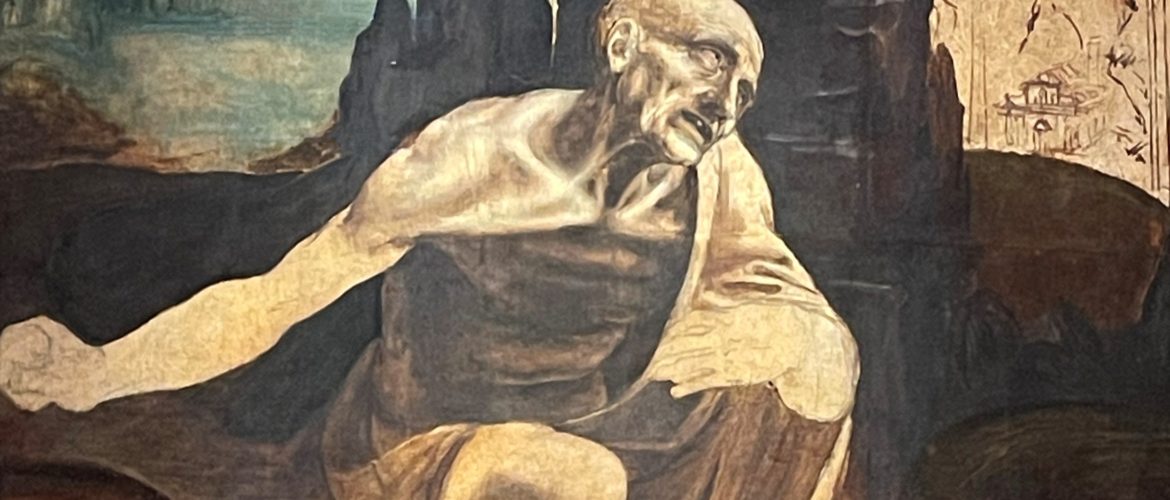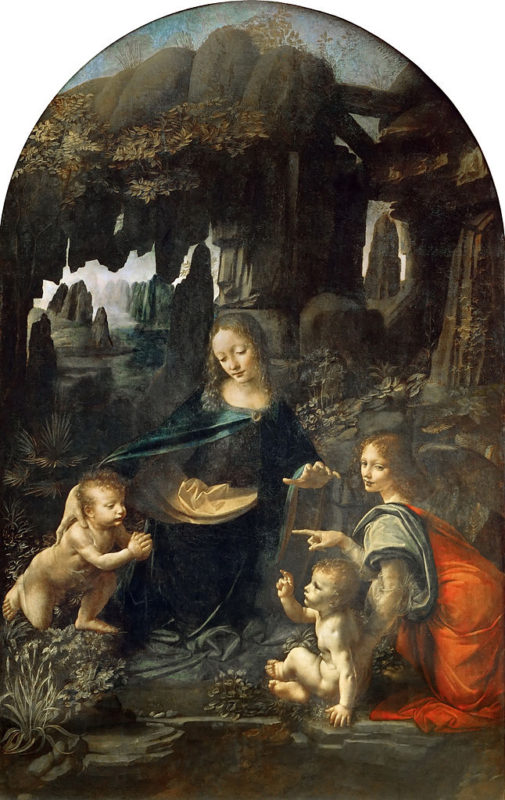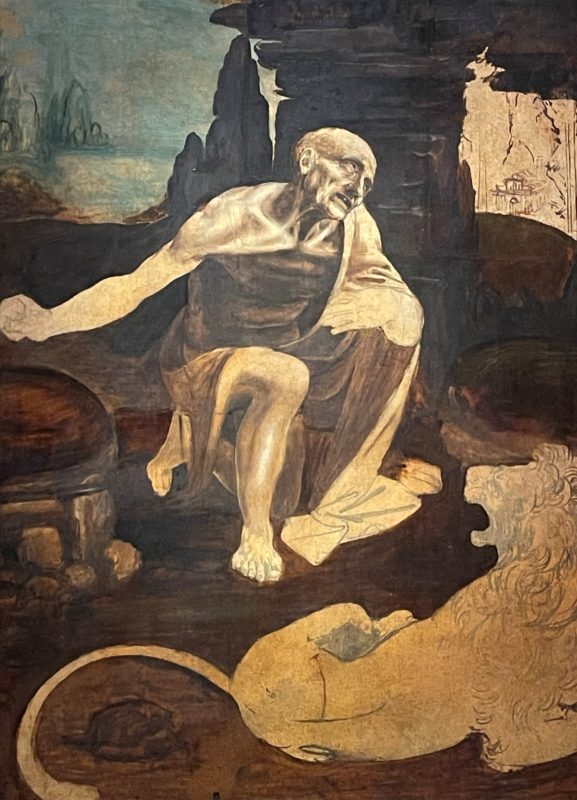Interesting Facts About Da Vinci’s Unfinished Painting “St Jerome”

Leonardo da Vinci’s body of work is a bottomless ocean of surprises. Those researchers and scientists who attempt to probe its mystery are often left with even more questions than they previously had. Today, we will let you in on some of the curious facts about one of the most enigmatic pieces by the great master — da Vinci’s unfinished painting titled “St Jerome in the Wilderness.”
Interesting Facts About Da Vinci’s Unfinished Painting “St Jerome”
References and symbols
“St Jerome” is often referred to as one of the greatest works in the history of art. Why is it so? Turns out, it is not just its masterful execution that draws the attention of both art historians and regular art enthusiasts. The painting features religious symbols and references to the master’s other works. For example, the lion, which can be seen in the foreground of the piece, is referencing the legend of Saint Jerome, an early Christian priest. Some researchers also point out the similarity between “St Jerome” and da Vinci’s “Virgin of the Rocks” because of the similar settings and the positioning of the characters resembling each other.
A personal story
The legend of Saint Jerome tells the story of a priest who retreated to the desert as a hermit in old age. He is often associated with penance and shown with a rock in his hand, which he uses to torture himself. The art historian George Bent said in his book “Leonardo da Vinci and the Italian High Renaissance” that this subject might have been chosen by da Vinci for a reason. At the supposed time of the painting’s creation, the artist was accused of involvement in homosexual activities. According to Bent, back then, Leonardo could have turned to art to process his feelings of remorse.
Provenance
The provenance of da Vinci’s unfinished painting is surprisingly convoluted. The earliest mention of “St Jerome” can be found in the last will of the Swiss neoclassical painter Angelica Kauffmann, where it was attributed to Leonardo. After that, the traces of the painting pretty much disappeared until the point when it was purchased by Cardinal Joseph Fesch who was Napoleon’s uncle. The cardinal found the painting separated into five parts and reassembled it. According to a legend, its lower half was found in a Roman shop, and the top was repurposed by a shoemaker as a wedge for his bench. After Cardinal Joseph Fesch’s death, the painting was resold and bought several times until it finally ended up in the Vatican Pinacoteca Art Gallery in 1856.
“St Jerome in the Wilderness” remains one of the most enigmatic works by the legendary Renaissance artist. Thanks to modern-day technology, we can keep discovering new secrets of this exceptional piece.


